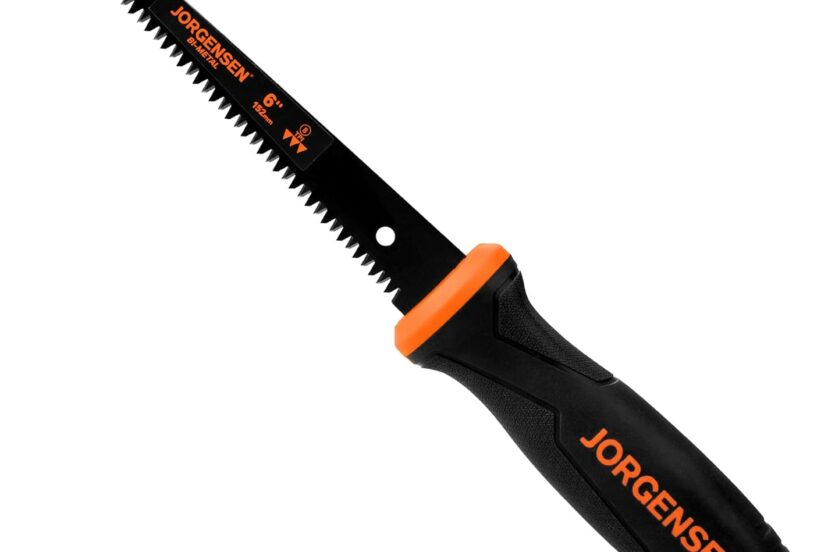Keyhole Saw: The Best 3 for 2024
Keyhole Saw: The Best 3 for 2024
Hey there, tool enthusiasts! Today, we’re diving into the world of keyhole saws, those nifty tools that make cutting in tight spaces a breeze. Whether you’re a DIY aficionado or a professional, having a reliable keyhole saw in your toolkit can make all the difference. So, let’s explore why a keyhole saw is essential and which ones you should consider adding to your collection in 2024.
Why a Keyhole Saw is Essential
Versatility in Cutting
One of the standout features of a keyhole saw is its versatility. You can use it to cut through a variety of materials, from wood to plastic to drywall. Imagine needing to make precise cuts for a home renovation project—your keyhole saw will be your best friend.
Precision and Control
When it comes to precision and control, a keyhole saw excels. Its narrow blade allows for intricate cuts, perfect for those tight spots where larger saws just can’t fit. If you love detailed work, this tool is a must-have.
Factors to Consider When Choosing a Keyhole Saw
Blade Quality
First things first, the blade quality is crucial. You want a blade that’s sharp and durable, capable of handling different materials without dulling quickly. Look for high-carbon steel or bi-metal blades for the best performance.
Handle Comfort
Ever tried working with a tool that just doesn’t feel right in your hand? It’s a nightmare. A comfortable handle can make a huge difference in your cutting experience. Ergonomic designs with non-slip grips are your go-to here.
Cutting Efficiency
Cutting efficiency is all about how quickly and smoothly the saw can get through the material. Check out user reviews to get an idea of how each saw performs in real-world scenarios.
Durability
A tool that falls apart after a few uses is a waste of money. You need a keyhole saw that’s built to last, even with frequent use. Sturdy construction and high-quality materials are key.
The Top 3 Keyhole Saws for 2024
1. Goldblatt Drywall Saw

Blade Features: The 6-inch bi-metal smooth blade (D6A+M2) features inverted teeth on both sides to increase pulling force. Its three cutting surfaces enable cutting 50% faster than traditional versatile tooth saws.
Ergonomic Grip Design: This lightweight jab saw has a soft, slip-resistant handle designed ergonomically for continuous use with minimal fatigue. The prominent handle guard enhances safety.
Practical & Sturdy: The sharpened tip with an oblique angle is ideal for plasterboard or splint. Precision cross-ground teeth cut in both push and pull directions, providing fast, clean, and effortless cutting. Deep gullets between saw teeth keep the blade free of material.
Applicable Object: Suitable for cutting drywall, wallboard, plywood, cement board, thin paneling, and PVC.
What’s Included: A jab saw with a comfortable grip. Professionally developed to meet your expectations. If you’re not satisfied, don’t hesitate to contact us—we value your feedback to improve our products.
2. Jorgensen Drywall Saw & 6-inch Jab Saw

Superior Blade: This 6-inch bi-metal drywall saw features a D6A+M2 smooth blade with inverted teeth on both sides to increase pulling force. Its three cutting surfaces make it 50% faster than traditional versatile tooth saws.
Ergonomic Handle: Made from PP and TPR (thermoplastic elastomer), the handle is solid, flexible, and designed to fit most hand sizes, reducing fatigue and providing a superior cutting angle.
Fast and Clean Cutting: The keyhole saw blade has triple ground teeth for fast, efficient cuts. Its black coating offers corrosion resistance and lower friction, ensuring smooth and clean cutting.
Hanging Hole: The sheetrock saw includes a lanyard hole for easy storage. Hang it on the wall after use to keep your workspace organized.
Application: The pointed tip at the end of the blade is ideal for plunge cuts. This hand saw can cut through drywall, wallboard, plywood, and plastic, making it a versatile tool for any cutting job.
3. IRWIN Tools Standard Drywall/Jab Saw
![]()
Rigid Blade: Provides solid cut control for precise results.
Bi-Ground Teeth: Ensure fast and smooth cuts, enhancing efficiency.
Comfortable Handle: Hardwood handle offers comfort and balance during use.
Versatile Use: Ideal for roughing in drywall, cutting out HVAC, plumbing, and electrical openings, or cutting ceiling tile openings.
How to Use a Keyhole Saw Effectively
Proper Grip and Positioning
Hold the saw with a firm yet comfortable grip. Ensure your hand is positioned to allow maximum control and minimal strain.
Cutting Techniques
Start with a gentle back-and-forth motion to create a groove. Once the groove is established, increase your speed and pressure to cut through the material efficiently.
Maintenance Tips
Keep your keyhole saw in top shape by regularly cleaning the blade and handle. Sharpen the blade as needed to maintain cutting efficiency. Store it in a dry place to prevent rust.
Conclusion
In conclusion, In the world of cutting tools, the keyhole saw stands out for its versatility, precision, and control. Each offers unique benefits to suit your needs. Whether you’re a professional or a DIY enthusiast, these saws will make your projects smoother and more efficient.
FAQs
What materials can a keyhole saw cut?
A keyhole saw can cut through wood, plastic, drywall, and more. Its versatility makes it ideal for various projects.
How do I maintain my keyhole saw?
Regularly clean the blade and handle, sharpen the blade when needed, and store it in a dry place to prevent rust.
Can a keyhole saw be used for drywall?
Yes, a keyhole saw is perfect for making precise cuts in drywall, especially for electrical outlets and fixtures.
How do I choose the right blade for my keyhole saw?
Consider the material you’ll be cutting most often. High-carbon steel or bi-metal blades are great for durability and sharpness.
Are keyhole saws safe for beginners?
Absolutely! With proper handling and safety precautions, keyhole saws are user-friendly and suitable for beginners.




